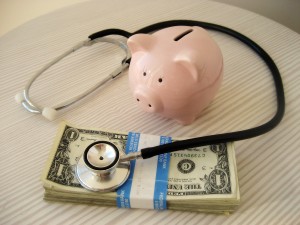 It is a mystery, an unsolved crime: The US demands more cash for medical care than any other country in the world, yet we rank a dismal 39 in overall health. We cannot manage to provide universal coverage for our citizens, which is an anomaly in the civilized financially ranking world. But no wonder — our medical services are far too expensive. Yet the real mystery is this: Exactly where is all that money going?
It is a mystery, an unsolved crime: The US demands more cash for medical care than any other country in the world, yet we rank a dismal 39 in overall health. We cannot manage to provide universal coverage for our citizens, which is an anomaly in the civilized financially ranking world. But no wonder — our medical services are far too expensive. Yet the real mystery is this: Exactly where is all that money going?For perspective, I am looking to the Far East. In Taiwan, where the health care system is one of most efficient in the world, NHI (National Health Insurance) guarantees full medical coverage for every citizen. Services provided include traditional Chinese medicine and acupuncture as well as modern hospital and surgical care, outpatient treatments, dental, drugs and dialysis. The cost of NHI premium is, on average, less than $50 a month; a middle school teacher pays only 300 NT, or about $9 a month. A catastrophic illness certificate is provided for those who cannot pay, people from central mountains, and, of course, all pregnant women and mothers. Yet no one is taxed to death for these privileges. How is such a thing possible?
The answer is a solution that the proud capitalists of the US would shudder to consider: NHI is a single buyer system, with the government holding all cards. This autonomous control makes it possible to set and regulate fees and impose global budget. As a result of this massive oppression of free enterprise, coupled with Taiwan’s powerful information technology, the annual administrative budget totals only 1.07% of all medical expenditures. This is a remarkable number considering that most other financially solvent countries average 9% to 10% per annum. And our own United States? As of last count, it was reported that fully 31% of our annual medical costs go, not toward patient care, but into the administrative pockets of the corporations that control the trade routes of our medical waters.
But what of medical services themselves? Financial statistics are not all that matters; other factors are at hand. How does the quality of care in Taiwan compare to ours?
In certain areas, their care is superior. A new mother is never sent home from the hospital after only a couple of days. In Taiwan, after the first week, baby and mom go to a lying-in hospital where nurses care for babies and special nourishing meals are fed to mothers to build back their strength. Post-partum depression is very rare.
But what about the treatment of disease? In truth, Taiwan’s best area of expertise is in public health — containment and treatment of contagious disease. Their success with non-communicable illnesses such as cancer, uremia and diabetes is less accomplished; results are about the same as ours. And a surprising new development: As modern ways creep into the culture, obesity, with its myriad manifestation of disorders, is corroding the health of the people, just as in the West. A lack of exercise has accompanied Taiwan’s success in the technology field, and its citizens are paying a price. Those suffering from obesity have far more mental health issues than rest of population and often the containment of those ills are left to the responsibility of family.
An area where the US has a distinct advantage is in the quantity of medical personnel. In Taiwan, doctors, and especially nurses, are in short supply. Family members often stay in hospitals with patients to ensure that fluid bags are filled and vital signs are monitored. The number one complaint of patients is that doctors spend too little time with them and communicate badly. Yet despite this, people all know that they do not have to be afraid to seek treatment. They will never lose their homes or be turned away. It is a right that they have without question, and none of them would ever choose to be without.
The real crime in American is that our health system pretends to, but does not, put the patient’s needs first. Our peace of mind is not a corporate priority, nor are the actual services provided. It is all about the profits to be made. Insurance companies are paid a fixed percentage of the claims they administer, so they have no incentive to hold costs down. Fees swell and spill into patient billings. The pharmaceutical giants and the vast, well-oiled machinery of hospitals and clinics hold more lobbying status than the patients they profess to serve. Twenty-five percent of all senior bankruptcies are due to medical debts.
In the land of the free and the home of the brave, this is a hypocrisy that we would all do well to examine.

